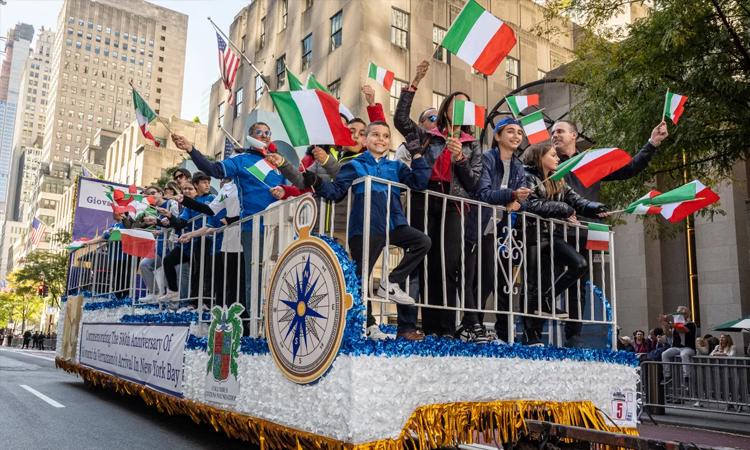Understanding the Diverse Observance of October’s Second Monday: Columbus Day, Indigenous Peoples Day, and Beyond
Varied State and Community Practices Surrounding October’s Holiday
Each year, the second Monday of October prompts a range of commemorations across the United States, reflecting a mosaic of cultural values and historical interpretations. While some states continue to honor Columbus Day in recognition of Christopher Columbus’s 1492 expedition, a growing number have embraced Indigenous Peoples Day to celebrate the rich heritage and enduring strength of Native American communities. This shift mirrors a broader national dialogue about history, identity, and inclusivity that has intensified in recent years.
The way this day is observed varies not only in official titles but also in the nature of celebrations, educational programs, and government participation. The following table highlights examples of these differences:
| State | Official Holiday Name | Common Observances |
|---|---|---|
| Florida | Columbus Day | State offices closed, parades |
| Washington | Indigenous Peoples Day | Community forums, cultural exhibitions |
| New Mexico | Indigenous Peoples Day | Educational workshops, traditional ceremonies |
| Illinois | Columbus Day | Public events, official recognitions |
| Texas | No official recognition | Regular business day |
- Local Discrepancies: Within states, cities and counties may adopt different observance practices, creating a complex patchwork of recognition.
- Educational Roles: Schools often use this day to present both the traditional Columbus narrative and the histories of Indigenous peoples, fostering a more nuanced understanding.
- Political Discussions: The holiday’s designation frequently sparks debate among policymakers, activists, and community members.
The Rise of Indigenous Peoples Day: A Growing Movement for Recognition
In recent years, the momentum behind Indigenous Peoples Day has surged, signaling a shift in how many Americans choose to commemorate the second Monday in October. This change is more than a symbolic gesture; it represents an effort to center the narratives and contributions of Native American communities that have historically been marginalized. States such as Minnesota, Maine, and Hawaii have passed legislation officially recognizing Indigenous Peoples Day, reflecting a broader trend toward honoring indigenous heritage.
Despite this progress, the transition remains uneven. Some regions steadfastly observe Columbus Day, others have fully embraced Indigenous Peoples Day, and many treat the day as a standard workday without formal acknowledgment. This diversity highlights the ongoing complexities in reconciling historical narratives and cultural identities. Influential factors shaping these observances include:
- Municipal and state policies that differ widely across the country.
- Grassroots activism advocating for increased visibility of Indigenous histories and rights.
- Educational reforms aimed at broadening public knowledge about the impacts of colonization.
- Shifting public attitudes that increasingly recognize historical injustices faced by Native peoples.
Public Opinion: A Nation Divided on Holiday Recognition
American views on the October holiday remain polarized, reflecting regional, political, and cultural divides. While many continue to honor Columbus Day as a celebration of exploration and Italian-American heritage, a growing segment supports Indigenous Peoples Day as a means to acknowledge Native American history and the consequences of European colonization. Urban centers and coastal states tend to favor Indigenous Peoples Day, whereas many Midwestern and Southern areas uphold Columbus Day traditions.
Several key elements influence these perspectives:
- Curricular emphasis: Areas with school programs that include Indigenous history often show stronger support for Indigenous Peoples Day.
- Political affiliation: Surveys indicate that Democratic voters are more likely to endorse Indigenous Peoples Day compared to Republican voters.
- Local government actions: Municipalities that have officially adopted Indigenous Peoples Day often see shifts in community attitudes.
| Region | Preferred Holiday | Support Percentage |
|---|---|---|
| Pacific Northwest | Indigenous Peoples Day | 70% |
| Midwest | Columbus Day | 60% |
| South | Columbus Day | 55% |
| Northeast | Indigenous Peoples Day | 52% |
Fostering Inclusive Conversations Around October’s Holiday
The contrasting ways in which Columbus Day and Indigenous Peoples Day are observed across the United States reflect deep-seated cultural values and historical experiences. Some states maintain Columbus Day as a formal holiday, while others have replaced it with Indigenous Peoples Day to emphasize recognition and respect for Native American communities. These differing approaches often prompt meaningful dialogue about history, identity, and cultural sensitivity.
To promote mutual understanding, it is crucial to engage in open, respectful conversations that consider multiple perspectives. Factors influencing local holiday observance include:
- Historical ties: Areas with significant Indigenous populations often prioritize Indigenous Peoples Day.
- Political environment: Changes in leadership and policy can lead to shifts in holiday recognition.
- Community values: Local attitudes toward heritage and inclusivity play a central role in shaping observance.
| State | Holiday Recognized | Year Adopted |
|---|---|---|
| Oregon | Indigenous Peoples Day | 2016 |
| Colorado | Indigenous Peoples Day | 2019 |
| Massachusetts | Columbus Day | 1937 |
Conclusion: Embracing Complexity in Commemorating October’s Holiday
The ongoing debate between Columbus Day and Indigenous Peoples Day highlights the diverse ways Americans engage with their history and cultural identity. According to recent research by the Pew Research Center, observance varies widely by region, reflecting a nation still grappling with how best to honor its past. Some states and communities officially celebrate Indigenous Peoples Day, others uphold Columbus Day, and many treat the day as a regular weekday. This patchwork of recognition underscores the importance of understanding regional differences and fostering inclusive dialogue as the country continues to navigate the complex legacy of this October holiday.







